Plant Focus: Carex
A delightful, low maintenance grass for a prairie or rock garden
Carex is a genus of around 2,000 different grass-like species of plants, which belong to the Cyperaceae family. Carex is an evergreen or deciduous perennial grass with gracefully arching, strap-like leaves which are formed in clumps. Even though Carex is usually described as an ornamental grass, it’s actually not a true grass; it is commonly known as a sedge and can be characterised by its stems, which are triangular shaped.
Carex comes in a variety of colours, including yellow-green, pale to dark green, blue-grey, and bronze, as well as a number of variegated varieties. It produces brown feathery flowerheads from summer, although these tend to be insignificant, as its striking evergreen foliage tends to be the prominent feature.
When it comes to planting design, Carex works well with other ornamental grasses, in rock gardens, and it’s also ideal for prairie gardens, alongside plants such as Achillea ‘Moonshine’, Echinacea purpurea, and Rudbeckia fulgida var. sullivantii ‘Goldsturm’. It’s also useful as an alternative to a turfed lawn, as it requires very little maintenance.
Key Characteristics:
✓ Evergreen or deciduous grass
✓ Height varies from around 30cm to 1.5m
✓ Evergreen or deciduous
✓ Characterised by its triangular shaped stems
✓ Foliage in yellow-green, pale to dark green, blue-grey, bronze, and variegated
✓ Thrives in a range of conditions, depending on the variety
✓ Low maintenance
✓ Great for planting in rock gardens, prairie gardens, borders, and containers
✓ Provides shelter and a food source for wildlife
Most Carex species are suitable for a variety of conditions, including full sun and shade, as well as wet and dry areas. The majority, however, do not cope well with heavy shade or dry soil. Varieties with bronze leaves, such as Carex testacea, produce their most vibrant foliage colour when positioned in full sun.
Carex plants are great for wildlife, as they provide an area of natural habitat and shelter, as well as places to nest. Pollinators like butterflies and bees also use grasses as areas of protection, whilst small mammals, pollinators, birds, and caterpillars use Carex as a food source. Many grasses are planted in combination with nectar-rich flowering perennials, thus, helping to enhance the overall habitat for these vital pollinators.
Fun fact
The common name for Carex “sedge”, is derived from the Latin word “secare”, which means “to cut”.
Different varieties of Carex
Carex buchananii
A tufted ornamental grass that grows up to around 75cm in height. Carex buchananii has gracefully arching, orange-brown leaves and brown, feathery flowerheads in late summer. It works well grown in borders and containers.
Carex comans ‘Bronze Form’
Carex comans ‘Bronze Form’ is an evergreen sedge that grows up to around 30cm in height. Its leaves are thin and bronze-brown in colour, and it blooms brown flower spikes in summer. Lovely for planting in containers.
Carex comans ‘Frosted Curls’
A drought tolerant, evergreen ornamental grass with a dense tussock of pale, silver-green leaves. Carex comans ‘Frosted Curls’ is ideal for planting near ponds or streams, and also does well in containers, flower beds, and borders.
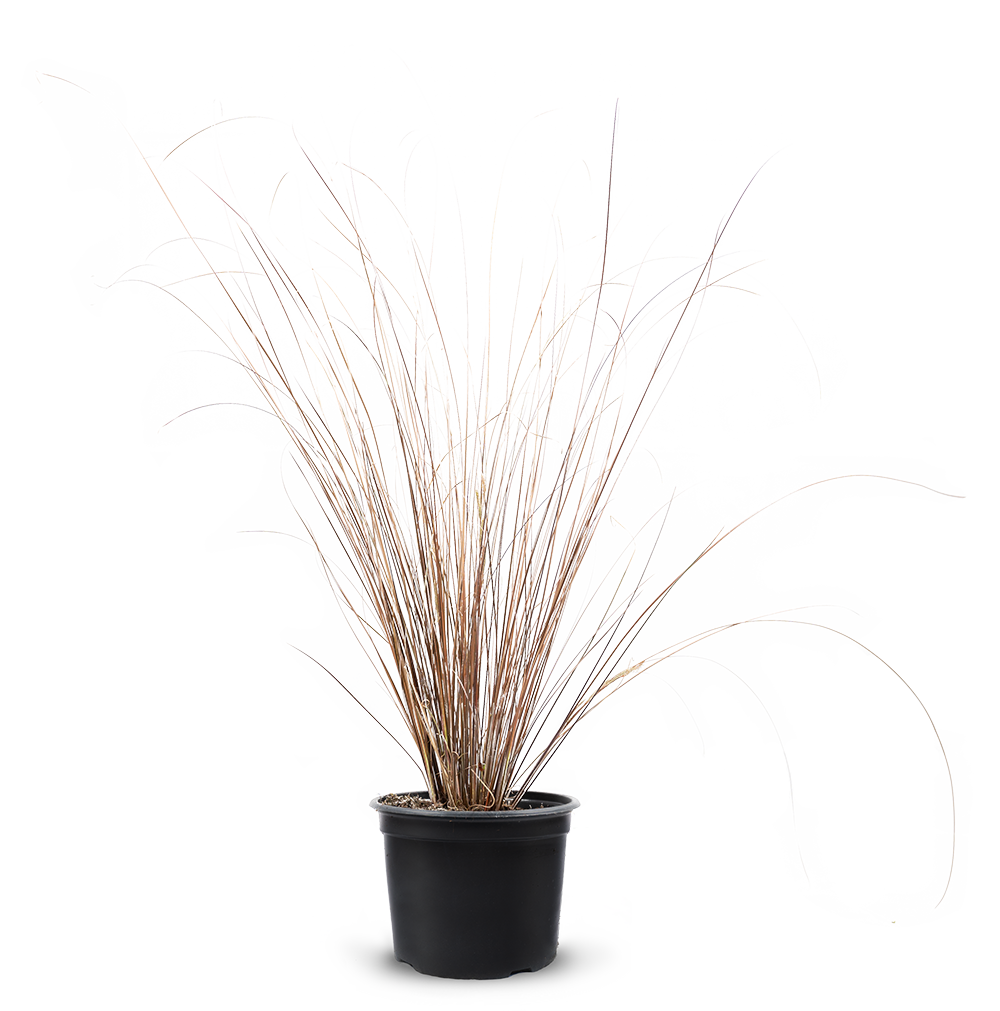
Carex buchananii
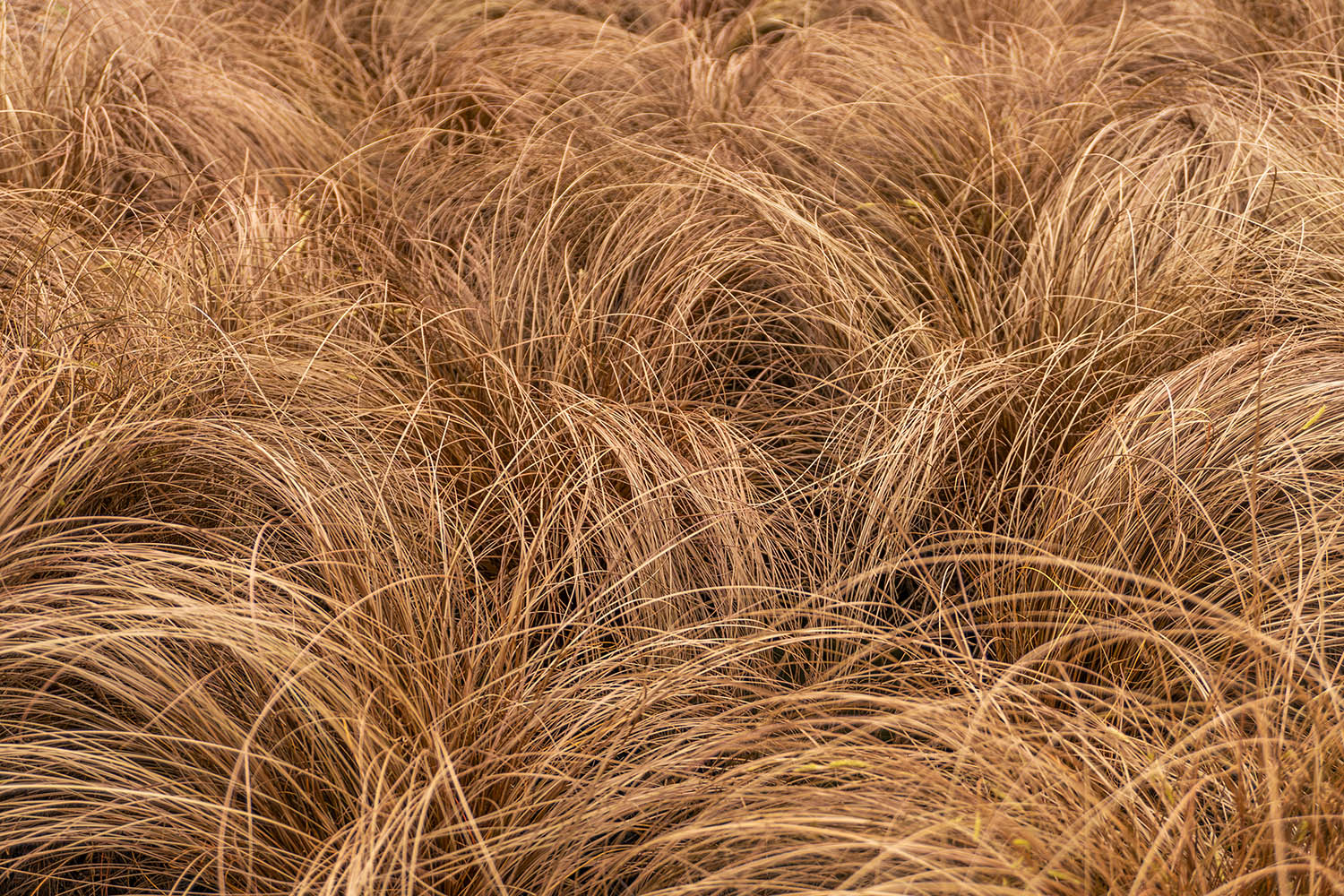
Carex comans ‘Bronze Form’
Carex divulsa
A clump-forming native sedge with elegantly arching, dark green foliage that grows up to around 40cm in height. Produces small, pale yellow-brown flowers throughout summer. Lovely as part of a wildlife garden and copes well with drought.
Carex elata ‘Aurea’
Carex elata ‘Aurea’ has arching, yellow leaves with green edging, and small, brown-black feathery flowers in summer. Great for planting near ponds or towards the front of borders, with other grasses and smaller perennials.
Carex morrowii ‘Ice Dance’
A variegated variety, Carex morrowii ‘Ice Dance’ is an evergreen sedge with a dense clump of arching, silver margined, glossy green foliage and small, brown flower spikes in spring. Grows up to around 40cm in height. Looks great in containers or at the front of borders.

Carex morrowii ‘Ice Dance’

Carex elata ‘Aurea’
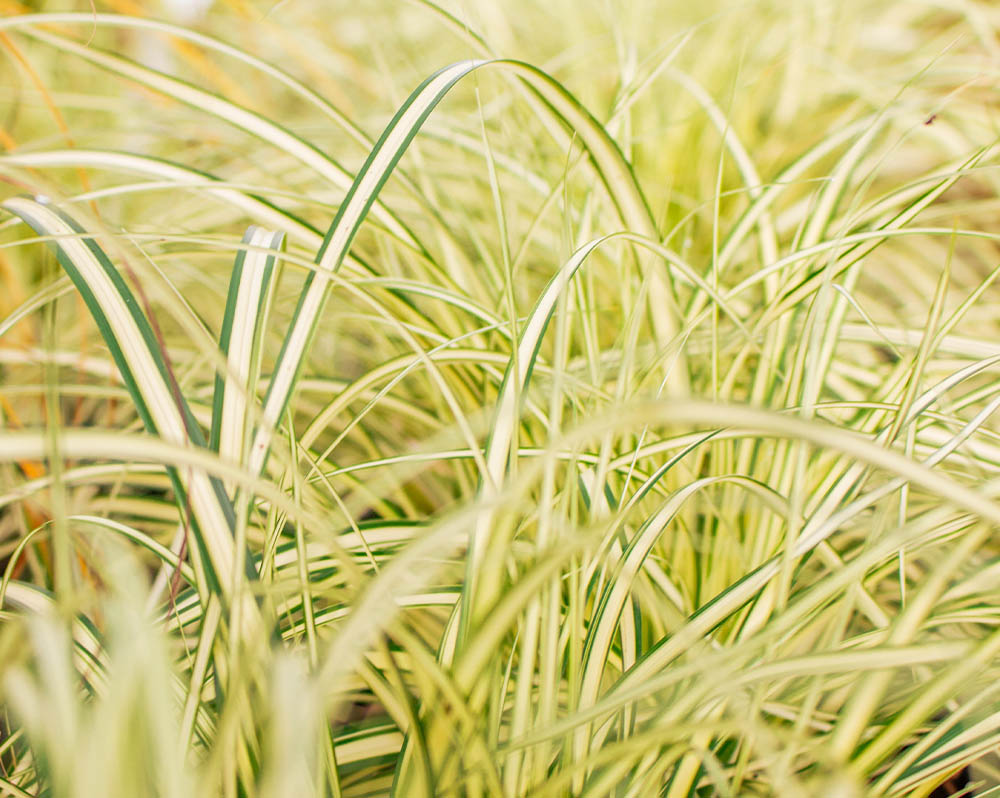
Carex oshimensis ‘Evergold’
Carex oshimensis ‘Evergold’
A small grass at around 30cm in height, with narrow, arching, dark green foliage that has a central yellow stripe, alongside brown flower spikes in spring. Carex oshimensis ‘Evergold’ is ideal for planting in containers or on the edge of borders.
Carex pendula
A vigorous native grass that thrives in moist soils. Carex pendula has dense clumps of dark green pendulous foliage and distinctive, drooping, yellow flower spikes. Grows to a height of around 1.5m. Great for planting near ponds or in flower beds and borders.
Carex testacea
An evergreen, drought tolerant sedge of around 60cm in height, with olive green, arching leaves which transition to a copper-bronze through winter, and brown flower spikes in summer. Great as a specimen plant and works well with perennials.
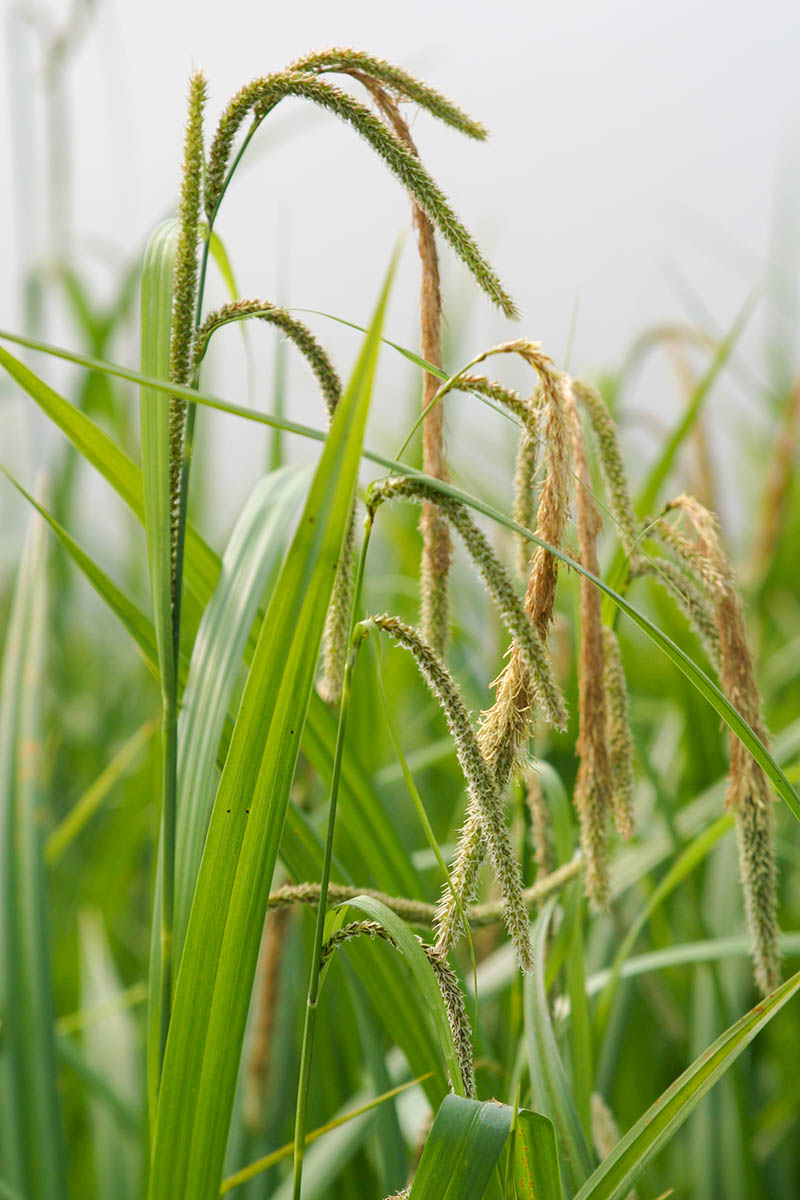
Carex pendula
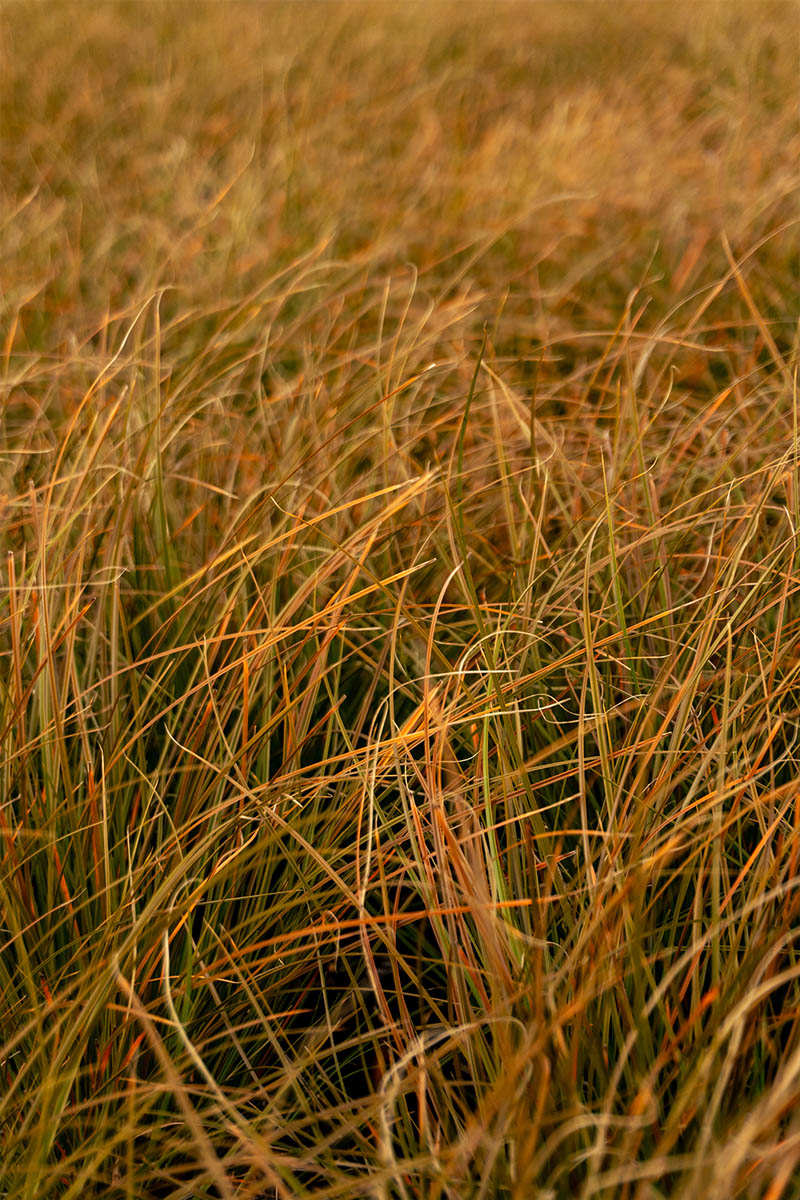
Carex testacea
How to grow and care for Carex
The best time of year for planting Carex is either spring or autumn. If weather conditions are mild then autumn is suitable, but it’s important to note that areas with very cold winters should wait until spring before planting. Carex requires regular watering until it’s fully established.
Shaded to partially shaded positions are suitable for most Carex species, however, there are some that can tolerate full sun, such as Carex divulsa, Carex morrowii, and Carex testacea. Some cannot handle deep shade, so it’s best to fully research the particular Carex species you are planting to make sure the positioning is suitable. Carex is generally easy to grow if it’s planted in the right place.
In terms of soil types, some do well in wet soil, such as Carex elata ‘Aurea’ and Carex pendula, but most grown best in well-draining soil.
Carex usually requires little to no pruning if it looks healthy. If a particularly harsh winter causes any damage to Carex, or any leaves or flowers are looking tired, these can be combed or raked off in spring.
Pests and diseases which affect Carex
If Carex has been given its ideal growing conditions, in most cases it wont be affected by pests or diseases. However, occasionally it can be affected by aphids (plant lice).
Aphids are a parasitic insect which suck the sap from ornamental plants and cover them with a sugary substance, known as honeydew. Leaves eventually become suffocated as they wilt and curl, and harmful fungi and insects are attracted to the plant.
Thankfully, natural predators usually control and eliminate populations of aphids. If this is not the case, then biological products, such as macerated garlic, can help to treat aphids.
If you would like to find out more about the species and varieties of Carex which we sell, get in touch with the G Team today.

